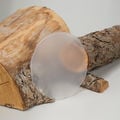Farewell to fossil fuels

When
Where
Event language(s)
More than half of our energy still comes from fossil fuels. No single technology can replace our reliance on them.
Our energy consumption continues to rise. By 2040, if we keep consuming the same way, energy consumption will have increased by nearly 50 percent.
Let’s play as a team and use our talents to replace the fossil fuel system. We need to produce renewable energy and find energy storage solutions for electricity, heating and transport.
The targets to reach
Solar and wind power are already scalable solutions; with other new entrants, these clean technology contenders are ready to go, but for them to sprint to the consumer market, we must cheer them on with locally adapted market solutions.
The materials used in solar cells damage the environment. We need new generations of renewable energy solutions that are safer and reduce our material footprint. We could even use materials derived from plants and trees, such as cellulose, to construct many different components of solar cells.
Renewable energy and electric mobility are key technologies to combat climate change, but batteries that store energy are dependent on certain minerals: lithium, cobalt, graphite and nickel. Currently, only about five per cent of lithium-ion batteries are recycled, even if all of them should be.
Carbon emissions of cars, motorbikes, boats and aeroplanes would decrease dramatically if we used electric power sources and recharged with renewable energies. We can reduce overall energy use through product-service systems that promote use over ownership.
Buildings are carbon gluttons. They gobble up half of the world’s raw materials and generate one-third of all greenhouse gas emissions. Perhaps we should be feeling building shame – or at least looking for more sustainable construction solutions. The carbon footprint of constructing a concrete multi-storey building is 75 per cent higher than that of a wooden structure.
Our team in this game
The Farewell to Fossil Fuels exhibits at Väre have been provided by Aalto Energy Platform
ONLINE: The celebration of global differences in electricity markets
Zoom into the microdata of successful energy market transitions to help design cooler markets. Local market differences can be turned into strengths in scientific understanding.

Printable solar cell technologies for smart buildings
Imagine a decorative solar cell that could be integrated into modern buildings without compromising their aesthetics.

Solar energy through ChemisTree
Is it possible to use trees in electricity production? Surprisingly, yes, it is! Transparent cellulose films enable greater efficiency of solar cells through their haze effect.

BATCircle – Circular ecosystem of battery metals
Learn more about responsible sourcing, refining and production of active battery materials as well as efficient recycling of end-of-life batteries needed for ongoing energy and mobility transitions.

Online Talk: System Innovations for Business Sustainability
This September Aalto University and Design Museum's business network Design Club offers two online talks with top speakers prepesenting academic and business.

Wood Wonders exhibition showcases climate-friendly building concepts
If all the buildings constructed in Finland each year were made of wood, the amount of wood needed for their construction would grow back in ten hours.

Cool and Icy Waters - ice research for sea traffic
The exhibition depicts marine and Arctic technology research at Aalto University, including the study of sea ice structure and behaviour as well as the functionality, sustainability and safety of ships and marine structures under extreme conditions. The goal of this research is to ensure safe and sustainable transportation in Arctic areas.


To make necessary changes, we need intelligent and well-designed solutions.
Designs for a Cooler Planet
The event is a part of Helsinki Design Week’s official festival programme, the largest design festival in the Nordics takes place 3–13.9.2020. Designs for a Cooler Planet is also one of the EU's Green Week 2020 partner events.
Farewell to fossil fuels
More than half of our energy still comes from fossil fuels. No single technology can replace our reliance on them.

Close the loops
Making things and manufacturing processes produce pollution and environmental degradation, draining natural resources.

Hack our habitat
Aggressive urbanisation is straining our ecosystem. Rising construction volume causes massive demand for energy-intensive construction materials, and construction already accounts for 39 per cent of the global CO2 emissions.

Consume consciously
Household consumption accounts for more than 60 per cent of global greenhouse gas emissions and 50–80 per cent of total land, material and water use.

Please notice that exhibitions are in four different locations at the Otaniemi campus area which all have different opening hours. Please check specific details from the exhibition pages. We are monitoring the COVID-19 situation closely, and the event will follow all of the rules and regulations set by the Finnish authorities. The safety of the employees, students and visitors is always prioritised.
Graphic design: Olga Elliot & Milja Komulainen
- Published:
- Updated: